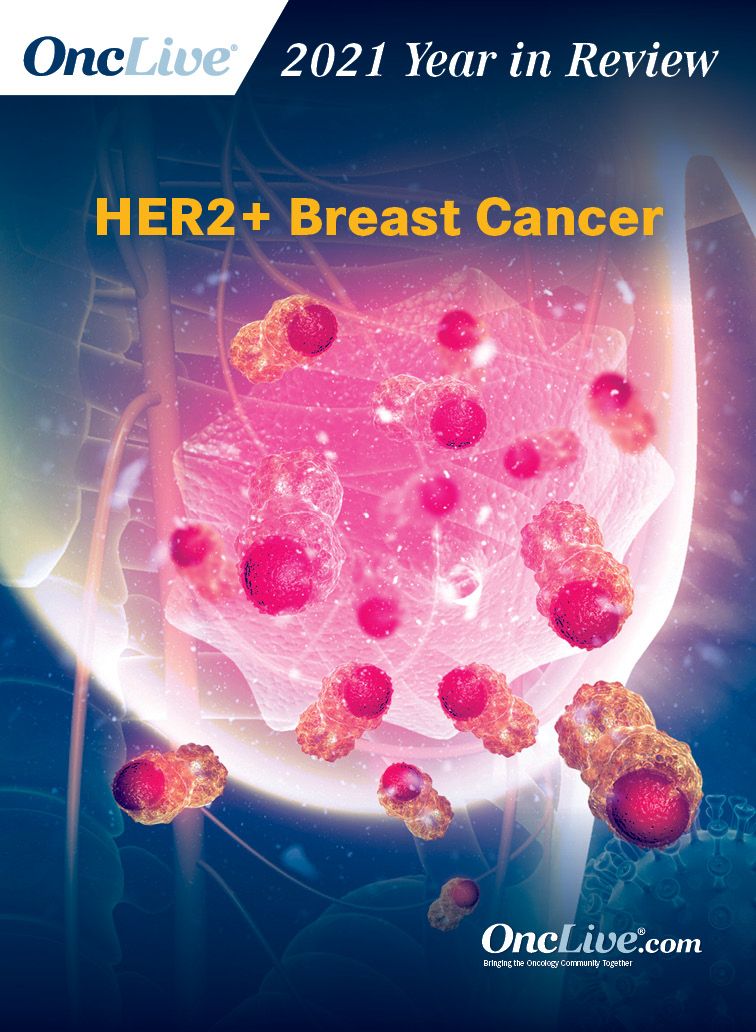Publication
Article
Krop Captures 2021 Breakthroughs in Metastatic HER2+ Breast Cancer
Author(s):
Ian E. Krop, MD, PhD, discusses highlights from 2021 in HER2-positive breast cancer and expectations for future research in 2022.
Ian E. Krop, MD, PhD

One theme of 2021 in HER2-positive breast cancer that will carry into 2022 is the progress that has been made for patients with brain metastases, using such agents as tucatinib (Tukysa) and fam-trastuzumab deruxtecan-nxki (Enhertu), explained Ian E. Krop, MD, PhD. He added that the next step will include the investigation of these agents in the early-stage setting and a careful look into the populations who can benefit from deescalated therapy.
“We still have to work on patients with brain metastases. The regimen from the HER2CLIMB trial [NCT02614794] with tucatinib showed the possibility of real [and] significant progress. Now, we need to keep building upon that. The other real area [of improvement we need to address] is trying to deescalate therapy. That’s why there are trials like the CompassHER2-pCR study [NCT04266249] and the Decrescendo trial [NCT04675827] in Europe,” said Krop.
In an interview with OncLive®, Krop discussed highlights from 2021 in HER2-positive breast cancer and expectations for research in 2022. He is an associate professor of medicine, Harvard Medical School; associate chief, Division of Breast Oncology, Susan F. Smith Center for Women’s Cancers; and medical oncologist and clinical research director, Breast Oncology Center, Dana-Farber Cancer Institute.
OncLive®: What was the recurring theme in HER2-positive breast cancer in 2021?
Krop: We are continuing to see better and better drugs in the metastatic setting that are pushing the needle in terms of improving efficacy. Progression-free survival [PFS] is getting longer and longer, and that’s really encouraging. We are now getting to the point—and this might be wishful thinking or overly ambitious—where we could even think about trying to look for long-term disease control, even theoretically curing patients with advanced HER2-positive breast cancer by leveraging the highest degree of efficacy with these antibodies, the antibody-drug conjugates [ADCs], and the [tyrosine kinase inhibitors], such as tucatinib.
By sequencing these agents together, [we could] potentially eradicate all clones of metastatic disease and theoretically cure patients. The amount of progress that has been made in the advanced [and metastatic] disease [settings] is remarkable and reflects on an enormous number of people who are working hard in this area and the number of patients who have been willing to go onto trials.
Reflecting on the 2021 San Antonio Breast Cancer Symposium, what datasets stood out to you in the HER2-positive realm?
[The 2021] SABCS was perhaps a little slower in the HER2 world than some other meetings because [the large studies] seem to come in bunches, but Sara Hurvitz, MD, of UCLA, presented data—an update of the DESTINY-Breast03 trial [NCT03529110]. This trial was looking at patients with HER2positive metastatic breast cancer who had previously had a taxane and HER2-directed therapy. This study was largely looking at a second-line patient population. Patients were randomized to the current standard of care [at the time], which [was] ado-trastuzumab emtansine [T-DM1; Kadcyla] vs trastuzumab deruxtecan.
We had previously seen this trial’s initial results at the 2021 [European Society for Medical Oncology] Congress, which were highly encouraging, showing a remarkable improvement in PFS with trastuzumab deruxtecan vs T-DM1. We know that T-DM1 is an active drug in this population, yet the trastuzumab deruxtecan arm did dramatically better with a hazard ratio of 0.28, which is probably the best hazard ratio we have ever seen in a registrational trial in pretreated patients. So we knew this trial had shown that trastuzumab deruxtecan looked very effective in the second-line population. The data that Dr Hurvitz presented were an update of that trial and included some more data.
The thing that really stood out [from that data set] was that the investigators looked at the patients who had brain metastases at baseline, and not only did those patients seem to see that same kind of superiority of trastuzumab deruxtecan over T-DM1 as was seen in the whole population, but there did look to be clear responses in the brain, [meaning] intracranial responses with trastuzumab deruxtecan. Those data are f itting with some other data that are emerging, suggesting that trastuzumab deruxtecan can have efficacy in the brain for patients with HER2-positive brain metastases.
That goes along with some other data we have seen with T-DM1 as well, showing that even though these molecules are quite large, and theoretically aren’t supposed to be able to cross the blood-brain barrier, they still seem to have activity in patients with brain metastases. That’s probably because the blood-brain barrier is broken down when a metastasis is there. These are very encouraging data, because we know that brain metastases are quite common in patients with HER2-positive advanced disease. Knowing that these very effective drugs can have efficacy within the brain is good news for patients, and we are hoping that additional data will come out from these trials and specific trials for patients with brain metastases in the next 1 to 2 years.
What is your hope for research in 2022?
In the next few years, we hope that we will start seeing the results of some of the trials that were started in 2021 or 2020, which are taking some of these highly effective drugs and using them in the early-disease setting.
Two trials are going on in patients who have residual disease after neoadjuvant treatment, in which we are trying to take this population, which we know is at higher risk for recurrence, and add other HER2-directed therapy [onto their standard therapy]. [One] trial adds tucatinib to T-DM1 in that situation. [Other studies are] looking at these highly effective ADCs, such as trastuzumab deruxtecan, to see whether that is superior [to T-DM1] in that early-disease setting, just like it was in the metastatic setting. [Another] trial is looking at trastuzumab deruxtecan in patients with residual disease as well. I’m hoping that we will not only make progress in the metastatic setting. The next real place to make true breakthroughs is in further reducing the risk that patients will develop metastatic disease in the first place, so we don’t have to worry about it [down the line]. Those are the 2 areas of excitement for this population.
Apart from moving some of these highly effective therapies into earlier stages of disease, what would you like to see take a bigger focus in 2022?
We are now curing most patients with early-stage, HER2-positive disease. If you look at the most recent randomized trials in the early-disease setting, like APHINITY [NCT01358877] or KAITLIN [NCT01966471], we are seeing disease-free survivals at 3 years of [greater than] 90%— and these are high-risk patient populations. So we are curing most patients right now, even those who present with high-risk disease, and that’s great. That also means we are probably overtreating a lot of these patients. Progress has been made in looking at the trastuzumab [Herceptin]/paclitaxel regimen, which was shown in the APT trial [NCT00542451] in patients with stage I cancers to be completely sufficient to lead to very good outcomes. This is certainly a less toxic regimen than TCH [docetaxel, carboplatin, and trastuzumab] or AC-TH [doxorubicin, cyclophosphamide, paclitaxel, and trastuzumab]. Now, can we build upon that?
We know the patients who have a pathologic complete response [pCR] to HER2-directed therapy tend to do very well, so the idea is, let’s treat patients with stage II/III disease with neoadjuvant therapy but with less chemotherapy because it’s the HER2-directed therapy that’s doing most of the work. Let’s back off on the chemotherapy and take advantage of the ability and the efficacy of HER2-directed therapies. These trials are looking at treating patients with just 12 weeks of a taxane with trastuzumab and pertuzumab [Perjeta; HP]. Patients who have a pCR won’t get any more chemotherapy and will just continue with the antibodies to try to get by with a much less intensive chemotherapy regimen and ride the backs of these antibodies to cure them.
With neoadjuvant taxane/HP, we see that the pCR rates are [greater than] 50%. If these studies validate that the patients who are treated this way and have a pCR do well, then for most of our patients with HER2-positive disease, we can get rid of these multiagent chemotherapy regimens. [We can] just use a little bit of chemotherapy [along] with HER2-directed therapy, which will be a real benefit for our patients going forward.










